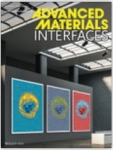Supervisory institution:
National Science Centre
Project manager:
M.Sc. Mykola Pavlenko
Budget:
149 700 PLN
Start date:
01.09.17
Duration:
36 months
In the aove drawing: schematic representation of band energies, charge transfer and water splitting processes in TiO2/SiNP for n- and p-type Si.
The most formidable challenges for humanity in 21th century are limited fuel sources and pollution of the atmosphere that could be overcame by realization of hydrogen economy. The water splitting process is relatively simple and efficacious method for hydrogen production, but for application at industrial scale it requires a development of cheap and effective photoanodes. As the sun energy is main energy source for water splitting process the required photoanode should be photoactive in full sunlight spectrum. A complex composite nanostructure combined of photoactive and stable in water environment materials could satisfy this requirement. As the most abundant and relatively cheap materials the silicon and metal oxides are well suitable for this purpose.
During the water splitting process a decomposition of water into oxygen and hydrogen gases occurs at a specific photoanode under sunlight irradiation. Total efficiency of the process depends on the energy adsorbed through sunlight by the photoanode. The more energy adsorbing by the photoanode, the more intensively chemical reaction at its surface occurs. Therefore, main objective is to obtain a structure that absorbing energy from sunlight effectively and provides high charge separation rate. Such a structure should also be reasonable for economic requirements. An appropriate solution consists in utilizing of silicon, as the most abundant element, but due to fast photodegradation some fundamental problems are arising. Therefore a composite structure based on silicon and protective coverage could be used. As a protective coverage a TiO2 layer could utilized and additional ZnO admixture will enhance its photoeletrochemical efficiency through inducing a set of intermediate energy states in the band gap. In order to achieve specified aim of the project the following objectives are set:
– to develop porous silicon based nanostructures – PSiNP arrays, combining lithography methods (sphere lithography, photolithography) and MACE;
– to obtain PSiNP with TiO2 and ZnO coverages using ALD technique;
– to study the structural, optical and electronic properties of the obtained structures depending on TiO2and ZnO layers morphology;
– to investigate the photoelectrochemical efficiency of PSiNP-TiO2, PSiNP-ZnO and PSiNPTiO2/ZnO photoanode for PEC application.
New findings in the novel photoelectrode nanomaterials based on PSiNP/TiO2 and PSiNP/TiO2-ZnO regarding the tuning of their optical/electrical and electrochemical properties will be explored. The novelty of the project, approach and methodology are expected to reveal and characterize new effects at the interface between Si/TiO2 and TiO2/ZnO. Moreover, the results of this project are expected to allow further investigations towards the tuning of the composite properties through surface modification. Optimization of the fabrication parameters and detailed characterization will provide functional photoelectrodes with advanced properties able for further integration in the PEC.


